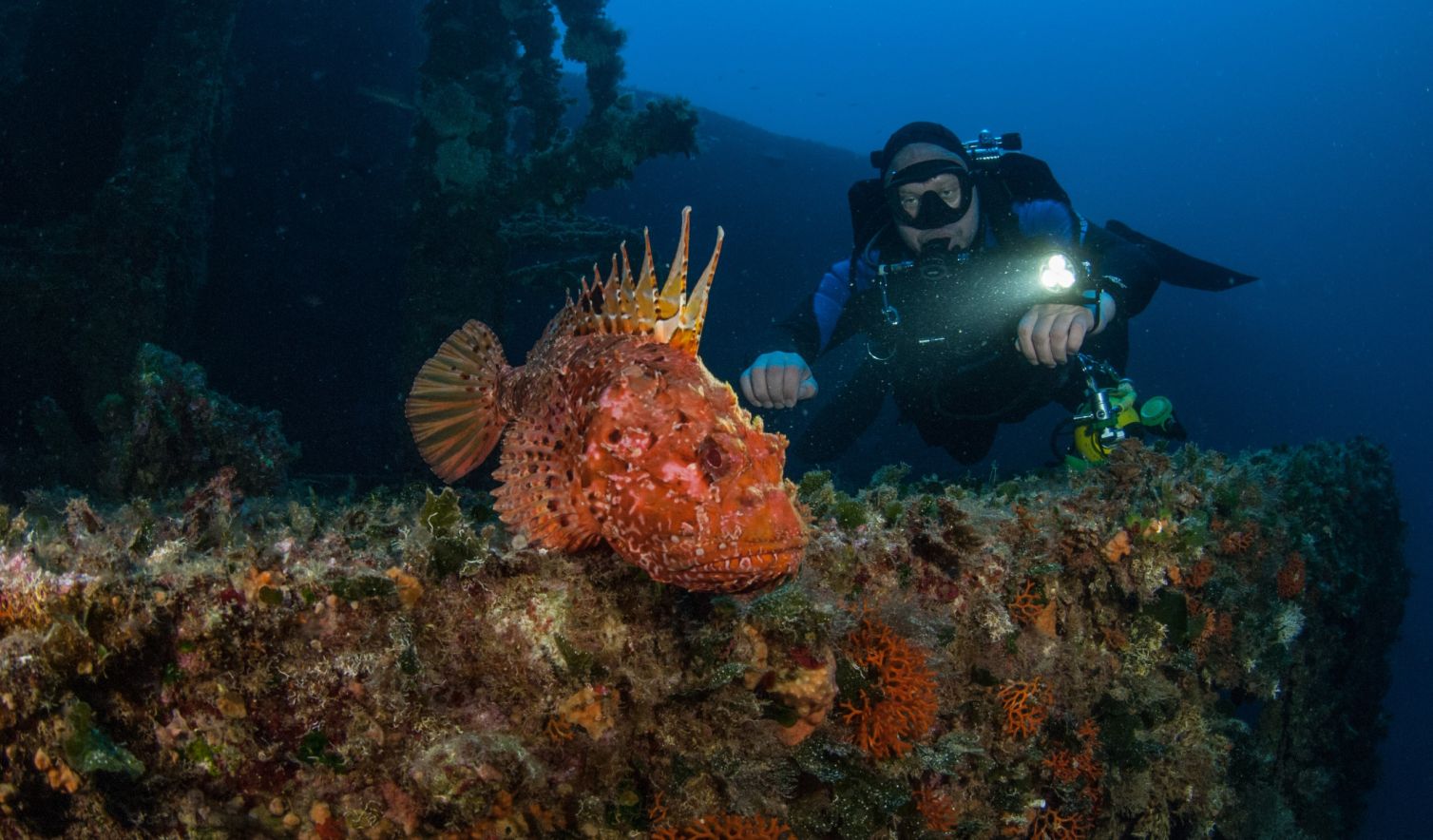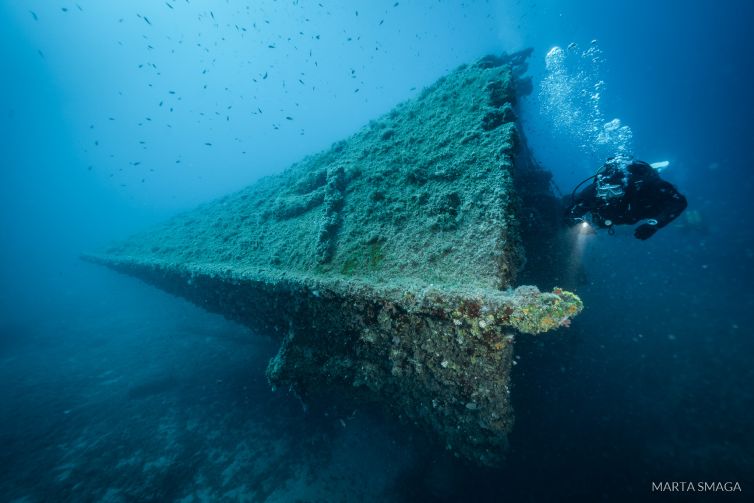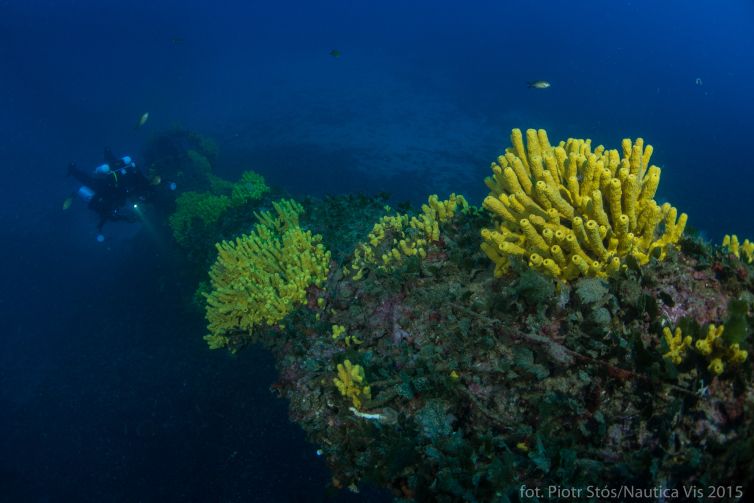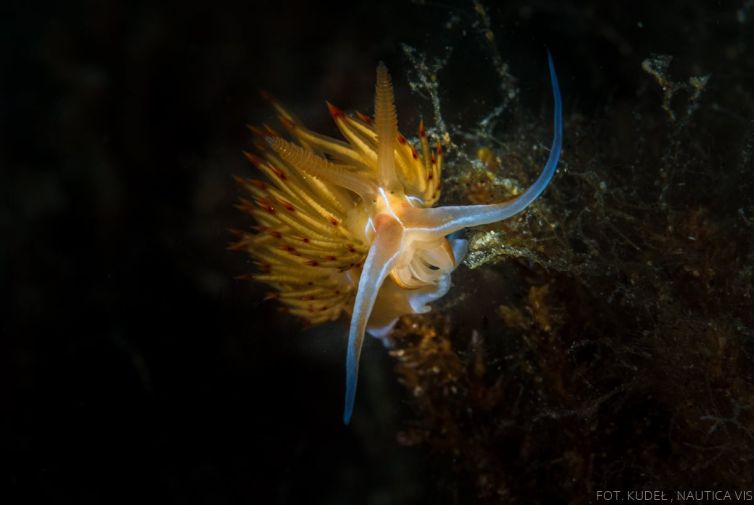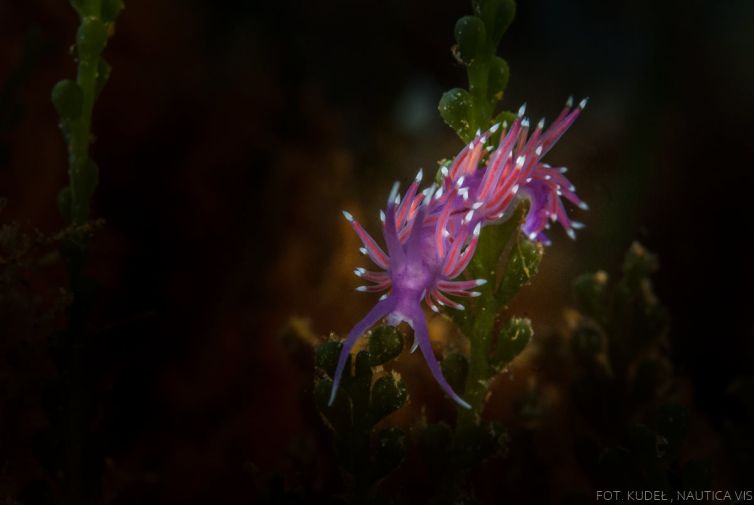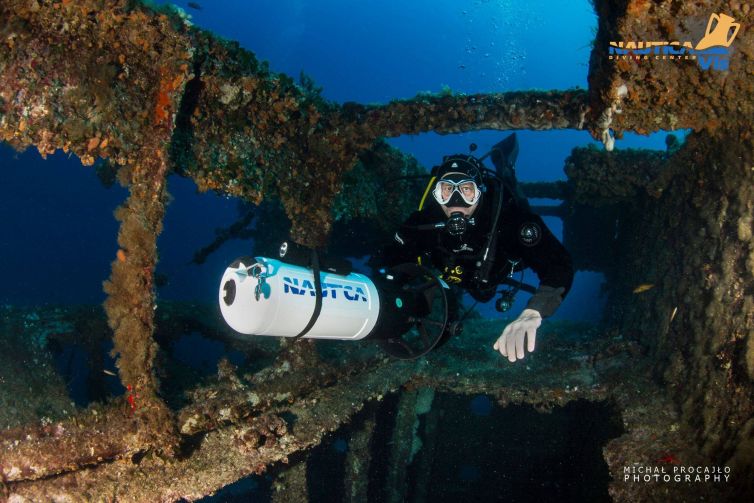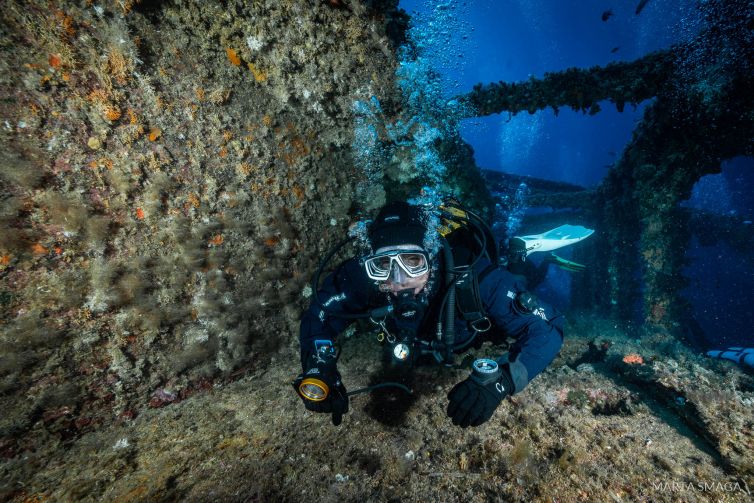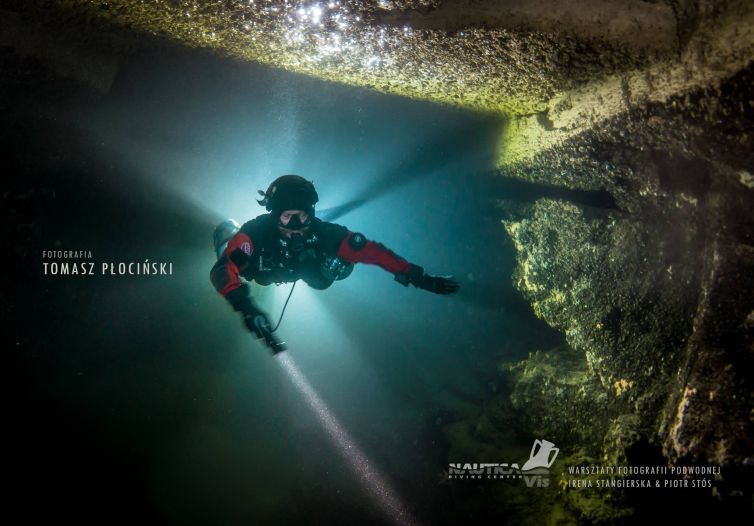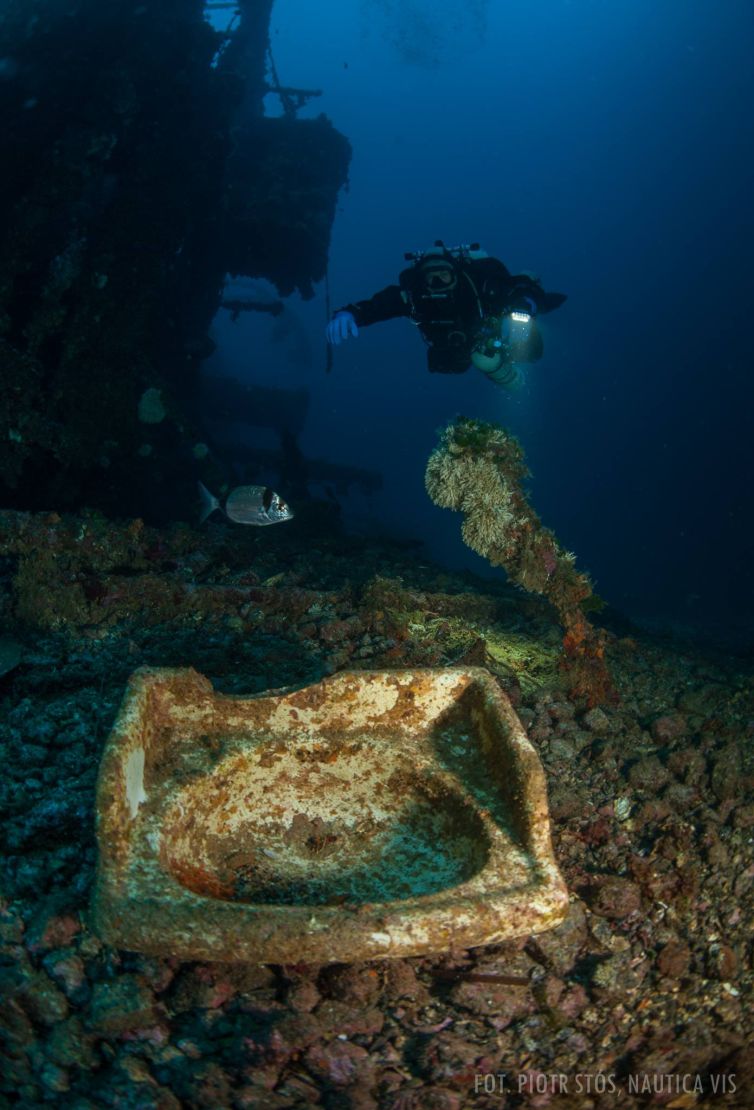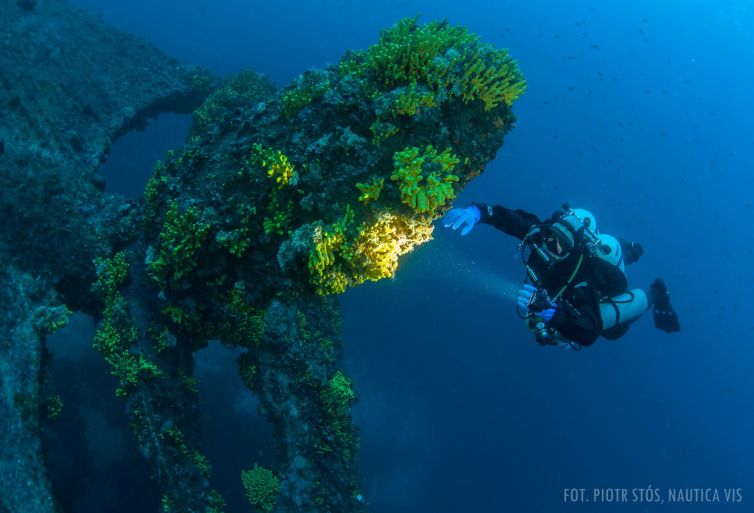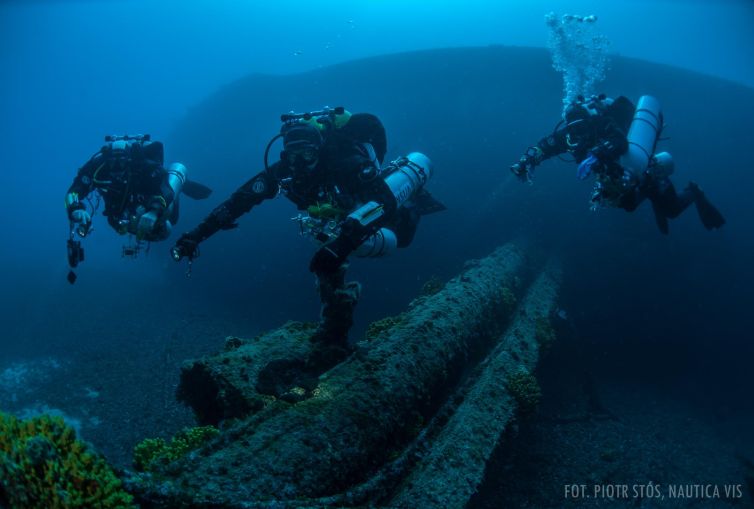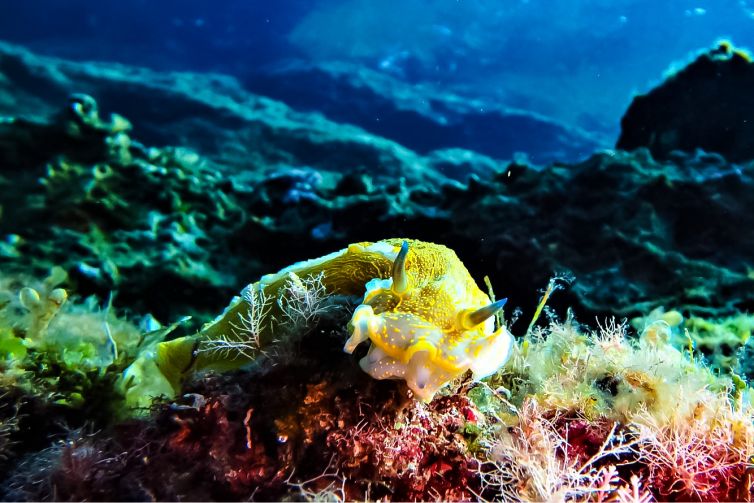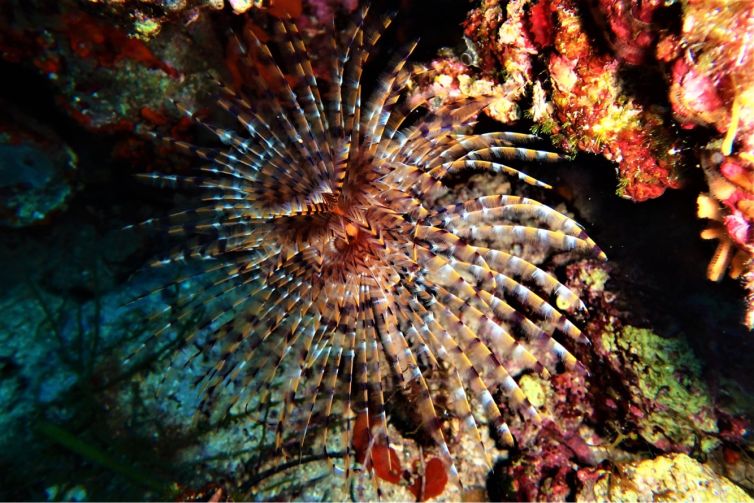Dive Sites
Vassilios

dive site type: wreck
difficulty: medium
depth range: 0-55 m (wreck 22-55 m)
distance from the diving center: 11 nm
short characteristic: a well-preserved, inhabited by many animals, 104-meters long steamer ship Vassilios was transporting coal to Venice, but hit the island in 1939 and sunk immediately
Exsert to the southwest Stupišće peninsula was strategically significant after World War II, when the Yugoslavian army stationed on the island of Vis. It was here, where the barracks were built and the cannons were set up to repel a possible attack from Italy.

In the stormy conditions the rudder of the ship – built in 1920, belonging to Greece and called Vassilios T. – got destroyed. This 104 m long steamer hit the rocks and finished the cruise on the western side of the island of Vis. There is a rumour that the crew specifically caused the accident so that the owner could have received compensation from the insurance company. Although in times of accident such delusions were commonplace, these are only anecdotal conjecture.
Diving on the Vassilios wreck is appropriate for advanced divers. Diving is done from the boat moored to the anchor line descending to the anchor chain leading straight to the Vassilios’ bow.
The wreck lies on the left side. The starboard in the bow section begins at the depth of 22 m. Swimming towards the stern, it is clearly visible that the wreck lies aslant – the propeller is at the depth of 45 m and in the deepest point the left side touches the bottom at 55 m.
The divers swim along the ship’s deck. On the bottom they can see the coal that spilled out of the spacious, open cargo holds. Despite the cargo holds with their sizes tempt to dive into them, divers can only have a look from the outside. Apart from the historical and legal considerations, this is due to environmental considerations. As a result of the movement of water inside the wreck, resulting from the move of both – the divers and the air bubbles, the mazut is released and then it rises up to surface and forms black oil slicks.
Luckily there is a lot to see outside the wreck. The masts, which are almost touching the bottom, are very impressive. They are abundantly covered with yellow and orange sponges. Besides, a variety of crustaceans, as well as numerous fish – including forkbeards, moray eels and large scorpion fish – can be seen on the wreck. The wreck is so close to the island of Vis that the safety and decompression stops at the end of the dive are made on the rocky slope rather than close to the anchor line, where the divers can see the octopus and various nudibranchs, including the rare green-yellow sea slug of the species Felimare picta.


